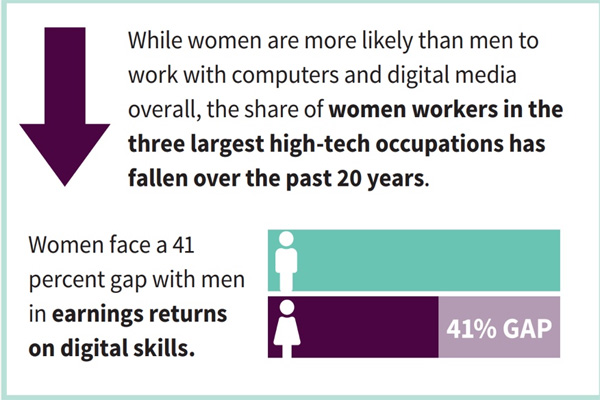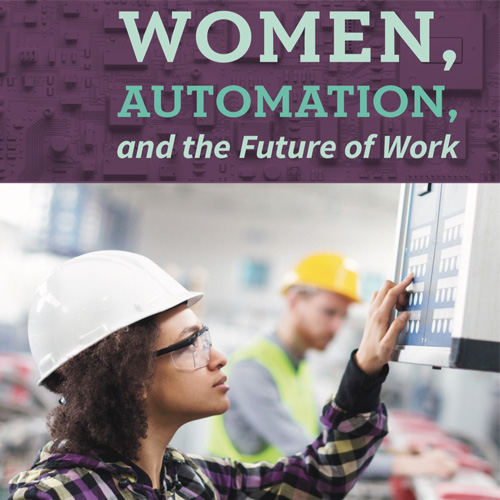Automation is likely to increase gender inequality in the workplace unless organisations take action now, reveals a new study released by the Institute for Women’s Policy Research (IWPR).
The report – entitled Women, Automation, and the Future of Work –provides a comprehensive analysis of how these technological changes and the future of work will affect female workers in the US.
KEY FINDINGS
While men are not immune to the risks of technological change, women are more likely to work in jobs where technology and automation threaten to displace them. According to the study, more women (58%), than men are at risk of losing their jobs to automation, despite the fact they comprise less than half of the US workforce (47%). Hispanic women face the biggest risk of losing their job to automation (1 in 3).
For women, increased automation is particularly likely to threaten both low and highly paid office/administration jobs, whereas for men, the risk is greatest for those in lower paid jobs. The study highlights that technology is particularly likely to threaten good middle-skilled jobs, such as secretaries, bookkeepers or accountants.
Although the number of women in IT has increased over the last few years, the amount of men entering the field has grown at a much faster rate. That said, the share of women working in three of the main high-tech computing professions (Computer Scientists and Systems Analysts, Software Developers and Computer Support Specialists) has declined since 2000, according to the report.

In recent years, programmes to increase the number of women in IT have become popular, but they ‘must expand further to give women a better chance to participate in STEM jobs that determine the future of automation and AI’, states the report findings. Despite the fact that earnings for both women and men have increased with greater ‘digitalisation’, the returns are significantly higher for men than women, with women currently facing a 41% earnings gap.
AUTOMATING FUTURE CARE
The study also reveals that making a living wage without being digitally literate is becoming increasingly impossible. Since more women also work in jobs that are least likely to be replaced by technology (such as child care, elder care and education), these occupations often pay less and provide fewer benefits than those that have a higher risk of being automated.
‘Personal care aides’ is the fastest growing occupation in the US, ‘yet low pay and poor job quality in many care jobs threaten the economic security of women workers, particularly women of colour and immigrants’, states the report.
BUILDING GREATER EQUALITY
Automation, however, holds the potential to improve both unpaid and paid care work too, ‘if appropriate investments are made in technological advances’, the study claims. That said, although robots may supplement future care professions, automation will not completely replace those jobs.

Commenting on the report, Economist and IWPR President, Heidi Hartmann, stated: “What we found were warning signs – declining earnings in women’s jobs, lower returns on education and digital skills for women, and concerning disparities in job quality. By enacting gender-aware policies, we can shift the trajectory of the future of work toward greater equity, benefiting women, families and the US economy as a whole.”
Jennie Sparandara, Head of Workforce Initiatives at JPMorgan Chase & Co, who supported IWPR’s study, added: “This report presents a comprehensive and compelling case that any discussion about technological change and the future of work must include gender as part of the conversation. It is possible to build a future of work that reduces inequalities, improves economic security, and ensures that women and communities of colour reap the many benefits of technological change.”
Click here for a copy of the report.








































